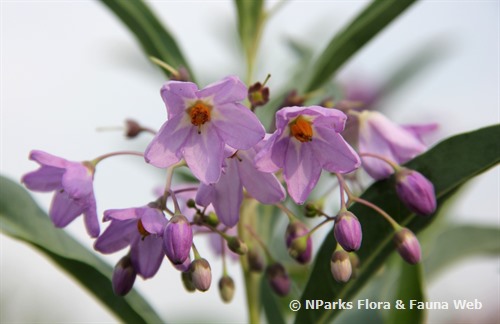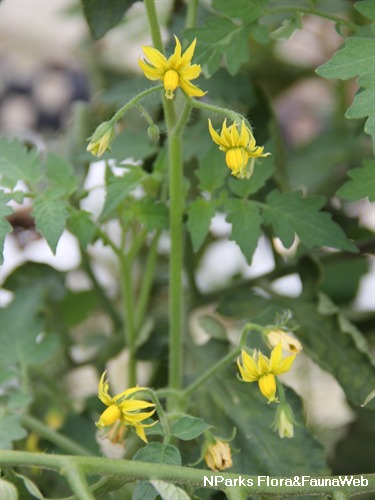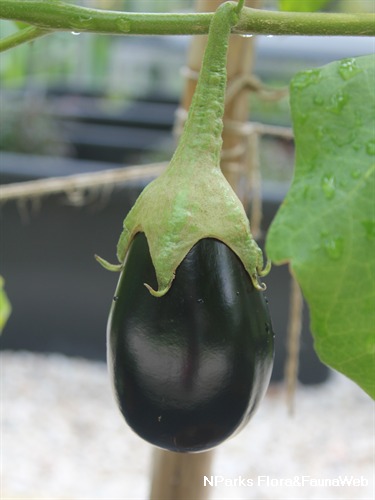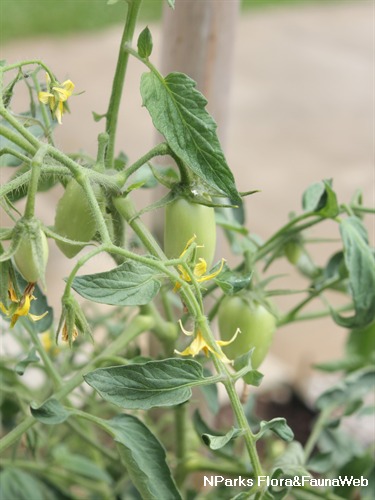.jpg)
Back
Solanum lycopersicum 'Micro-Tom'
| Family Name: | Solanaceae |
| Common Name: | Cherry Tomato |
The dwarf tomato cultivar 'Micro-Tom' is among the smallest, growing up to 20 cm tall. In less than 4 months, it produces a bumper crop of round, deep red tomatoes about 1.5 cm wide. 'Micro-Tom' was bred to be disease resistant and produce a bountiful harvest.
Name
Classifications and Characteristics
| Plant Division | Angiosperms (Flowering Seed Plants) (Dicotyledon) |
|---|---|
| Plant Growth Form | Herbaceous Plant |
| Lifespan (in Singapore) | Perennial |
| Mode of Nutrition | Autotrophic |
| Plant Shape | Dwarf |
| Maximum Height | 15 cm to 20 cm |
Biogeography
| Native Distribution | Of horticultural origin |
|---|
Description and Ethnobotany
| Growth Form | Dwarf, determinate variety is one of the smallest tomato cultivars growing up to 20 cm tall. It was developed by the University of Florida (USA) and has a bushy growth habit. |
|---|---|
| Fruit | It produces an abundance of round, deep red tomatoes (1.5 cm wide). 'Micro-Tom' is a determinate variety where the plant bears a lot of fruit at the same time, usually about 25 tomatoes. |
| Cultivation | This tomato needs a minimum of 4-6 hours of direct sun. It produces fruit from 50-60 days from seed sowing. |
| Ethnobotanical Uses | Edible Plant Parts : Edible Fruits Food (Fruit or Vegetable): The tomatoes are best eaten raw in salads. |
Landscaping Features
| Landscape Uses | Container Planting |
|---|
Plant Care and Propagation
| Light Preference | Full Sun |
|---|---|
| Water Preference | Moderate Water, Lots of Water |
| Plant Growth Rate | Fast |
| Rootzone Tolerance | Well-Drained Soils, Fertile Loamy Soils |
| Potential Problems | Check the underside of leaves regularly for aphids, whiteflies and red spider mites. Avoid over-fertilising which encourages aphids to attack. Adult whiteflies can be trapped by hanging yellow sticky traps. Control red spider mites by applying organic soap or mineral oil to the leaves. Check the soil for root-knot nematodes and use crop rotation with resistant varieties or non-host plants to control them. |
| Pest(s) | Sucking Insects, Nematodes |
| Planting Distance | 0.3 m to 0.6 m |
Fruit, Seed and Spore
| Mature Fruit Colour(s) | Red |
|---|---|
| Mature Fruit Texture(s) | Smooth |
| Fruit Classification | Simple Fruit |
| Fruit Type | |
| Seed Quantity Per Fruit | Moderate (6-10) |
| Typical Fruiting Age | 90 days to 120 days |
Image Repository
Others
| Master ID | 33996 |
|---|---|
| Species ID | 8412 |
| Flora Disclaimer | The information in this website has been compiled from reliable sources, such as reference works on medicinal plants. It is not a substitute for medical advice or treatment and NParks does not purport to provide any medical advice. Readers should always consult his/her physician before using or consuming a plant for medicinal purposes. |

.jpg)
.jpg)
.jpg)



